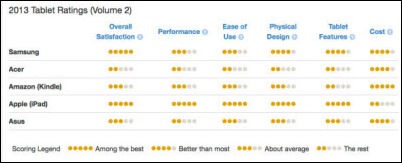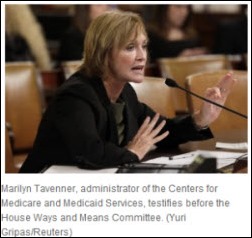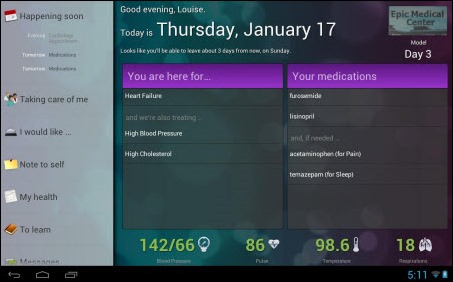Neal Patterson is chairman of the board, CEO, and co-founder of Cerner Corporation of Kansas City, MO.

We have somewhat questionable healthcare costs and outcomes even though we’re spending a fair amount on information technology. What are we’re doing wrong as an industry?
I believe that IT is the single most strategic lever that healthcare can use to fundamentally change the cost structures and the quality of the service and the solutions they provide. It’s a lever that needs to have an impact.
If you look at other systemic things that are not working right in healthcare, the other one would be how healthcare gets paid. There’s not a business model for health. This all reinforces the reactive, volume-based care model.
So one side is broadly a policy change that could be effected through policy; it could be effected through the marketplace, too. The other side is this huge investment that our clients around the world are making in healthcare. We need it to be more of a strategic lever to change the fundamental results of their business. Those are two things that come to mind as to if you could change something in a relatively short time that would have the biggest impact — how people get paid and how they strategically use IT.
Are you encouraged by the change in policy direction?
We’re in an era that does create a bit of chaos, but it’s an era where there’s a lot of experimentation. I’m fairly optimistic that it will formulate into a cohesive policy. We have to get through this era. Our government is out of money, as evidenced by the news from last night, last week, last month, around the deficit we’re running. We’ve got to get through that era where real policy could be formulated. But I certainly do like the experiments that have been run around accountable care, around value-based care, even around bundled payments. We do need change in how healthcare is paid.
Healthcare is political, and one person’s excessive costs is another person’s livelihood. How would you fix it, given that so many special interests that are fighting over those dollars that everybody hates to spend, but that everybody likes to take in?
It unfortunately has a lot of politics in it. I don’t like this part, but it’s fixable, because there’s the single buyer.
Wal-Mart’s impact on retail, we have the same thing … we have a Wal-Mart in healthcare. Our federal government buys so much of healthcare that if they get it right, it will change. Even though it’s a complex system and there’s an unbelievable amount of variables, there’s a single leverage point that would create a huge incentive.
At the Cerner Health Conference, I did what I openly called a few Neal rants. [laughs] I said that some of them are going to be directed at my dear clients. In reality, most of the progress, certainly the rapid progress, made on the IT side has been because they were paid to do it. That’s my broad criticism I make on healthcare — unless somebody pays you to do it, you really don’t. There isn’t the strong instinct to fight the barriers to make the fundamental change.
Just take sepsis as an example. The algorithm to predict that someone is going septic has been available for decades, We’ve for decades known the variables in that algorithm, and it’s fairly well published. With many IT systems, certainly ours included, you could implement those predictive models, and with the current decision support, fire off the alerts and actually save lives. Much of that didn’t happen until there were strong external incentives.
I’m optimistic in the sense there’s a single leverage point to fundamentally create systemic change in healthcare. The investment in IT gives the capability of making systemic changes to healthcare. There are two leverage points. Unfortunately, one of them is tied up in politics, which isn’t my favorite subject. [laughs]
Along those lines, the federal government dominates the R&D agenda of Cerner and every other vendor because of the requirements for Medicare and Medicaid billing and now Meaningful Use and ICD-10, not very much of which has any positive impact to patients. Do you see that changing?
I’ll speak for Cerner. The federal government’s requirements through Meaningful Use, ICD-10, and the much larger list of compliance when you add all the FDA and all that, that doesn’t drive our investment agenda around IP. We certainly have to cover that.
We had a new business client make the comment that with the other companies they went to, their focus was Meaningful Use requirements. it was a multi-day session with us and the guy says, “We have not heard the word Meaningful Use once from you guys.” It’s because it isn’t that we didn’t have work to do — because when you get the specific requirement, you’ve got to convert to the specification – but I didn’t think Meaningful Use was that high a bar. We’re not being driven by that.
Frankly, ICD-10 was in our systems in Australia 10 years ago. Was it embedded in all of the third-party reimbursement and documentation methodologies and impact or revenue? No, but our core capabilities were there 10 years ago.
I was in a session within the last year, I think it was last spring. There were like 20-some counterparts or near counterparts in the room. Whatever the good fortune was, I ended up being the last to speak. [laughs] I didn’t plan, I wasn’t exactly driving it, but it was the way it worked. Everybody else in the room, all the other companies — and it was a government-based meeting — everybody went around and said, here’s the impact of all this on themselves, on their companies. Everybody basically was whining. I’m the last to speak. I turned to my counterparts and said, I don’t get it. We’ve been given a gift. There has been a huge acceleration in adoption of IT. There’s huge progress around standards. If we are good, we’re about to create a golden era, the next golden era of healthcare.
I don’t know why everybody’s complaining. It was a gift. Now I’m probably going to get myself in more trouble. [laughs] We’ve been given a gift from the IT side. It’s not a burden. These are not that high of bars. The opportunity to create this golden era is sitting there. That’s what excites the heck out of me and drives me. Because when we do get the new business model, where you’re really responsible for the health of a population, not reacting to the care needs, that’s an exciting era. We’re investing heavily in it. And it’s not a Meaningful Use requirement. [laughs]
Do you think in that change toward that population health-type model that patients will gain leverage instead of being almost a bystander in their own care?
I’m going to take an indirect route to answering that. I think one of the positives of the exchanges is that it basically connects the person to a marketplace. It’s a marketplace of decisions around healthcare, what level of benefits do you want, blah blah blah. In essence, it’s creating connections of individuals to making decisions healthcare. I think it’s fundamentally important.
I do believe Meaningful Use requiring fundamentally a patient portal to get access is really a nice step, too. Increasingly, I think people have higher expectations of being able to get minimum access to a record.
Then I’ll hit the third leg of the stool. I think you probably know this, but we do a fair amount of work at the employer level. We certainly have used Cerner in our workforce, in our health plans in this country, as a laboratory on how to create engagement at the employer-employee — in our terms, associate – level and their families. I think we’re part of this pre-era of getting people involved in healthcare.
We’ve got three important legs playing out right as we speak. It isn’t a solid platform yet. I believe that we’ll never get to true interoperability without a service that will provide identification across providers and across IT platforms. Our purpose for being involved in CommonWell is interoperability.
We’re in a pre-era of having alignment around forces that will create an environment where those who choose can be fairly engaged at low-cost, low-friction ways of being engaged in their own healthcare. All the way from trying to be well, to making this economic decision, which is one of the things that has been missing. The exchange is that part of the stool. Down to the Meaningful Use patient portal, even though it doesn’t solve the ID issue.
The important era we’re in, I think it comes together this decade. The reason I strongly believe that is it goes back to the deficit. We have no fundamental choice other than to socialize the system in the US. Our choice is to produce higher quality at lower unit cost and to start focusing on health-related ways of minimizing the prevalence of highly costly conditions and patterns in society.
Vendors and providers really have never been trained to think in terms of managing a population. They were raised in an era of managing an episode of care. Is that going to be a tough transition?
Not really. There’s been a lot of change since the ‘90s. Health systems have gotten to a more appropriate scale. They have better management leadership. Many of the leaders have a vision of a direction this size. They’ve got size, scale, and better leadership. The IT investments they’ve made and the degree which they have been driven into the clinical process is significantly different this decade than it was back in the ‘90s. Twenty years has made a lot of difference.
The problem is the layer above them. The providers have been conditioned to let someone else aggregate their populations. That’s been the insurance companies.
With their size and scale of providers and if you change the incentive structure, I think many of them will be positioned in the last half of this decade to get most of the first dollar of healthcare. Then they have the incentive.
It’s bipolar. Once you have the first dollar, your incentive is to keep people out of your facilities, out of your emergency rooms. Keep them as healthy as you can, because you’ve got the dollar. It’s bipolar. It screws up your behavior. But I don’t see any other way out.
Do you believe the hype around big data and what value it will provide in this transition?
Yes and no. You certainly have to give Amazon credit for knowing their customer, knowing what they’ve done in the past with that customer, and making sure that they create as little friction as possible to repeat business. Is that big data?
I think big data is a grossly overused term. It is understanding patterns, finding algorithms that you can embed that predict repeating those patterns. Is that big data? I’m OK calling it that. It’s not my favorite term. I’d love to hear your answers to all these questions. [laughs]
We’re not as population health-based as most other countries. We like the idea that our healthcare is individualized and personal, that we don’t want algorithms or even to some extent evidence-based medicine. What will take to get people to buy into the concept that there are certain things that make perfect sense to society, such as the science that said mammograms are not effective in certain groups, and yet everybody threw up their arms and said, no, we want them anyway?
I think that’s pretty clear. When you don’t have information about the members of a population, all of your rules, all your algorithms, have to be based on the entire population. There’s no personalization of it. That’s where you get the mammograms at 50 problem. All of us, being part of the population … having two daughters and a wife and one granddaughter, I want the algorithm, but I want it personalized to every individual in my family. I don’t want the algorithm that has to treat the entire population as one.
I want the algorithms. I desperately want the algorithms. I was thinking deeply about this yesterday, because I was involved in the care system with my wife. I was sitting there talking to really smart people about the response to this drug and this type of case. This broad pattern, it’s not her, she’s in a population. But the reaction of this drug to that population, it’s not just probabilistic. I mean, 70 percent of the time it works, 30 percent it doesn’t.
I know for a fact that most of that could be much more precise, much more precision in that if you go down to the genetic level. Take that phenotype from the genetic record that you have and build your models at that level. It won’t be us as consumers because I don’t want the mammogram at 50. I want the algorithm that says for you, for my daughters, here’s when you should start having mammograms. We’re going to get there. It doesn’t seem like big data to me. It’s finding the patterns and then building the algorithms.
The group that’s going to have the problem with it isn’t the consumer, because we will as consumers eat up the fact that you’ve taken that drug and you can predict its response against me as an individual because you have my DNA and you know what pathway that thing activates down at my genetic level. The people that are going to have trouble with this is the medical profession, because to them evidence is simply graded opinions and the highest-graded opinion is a blinded study with an adequate population that has a certain standard deviation that has been run and vetted through an editorial system. That’s the Grade A evidence. Well, these algorithms are never going to go through that process.
How do you see that being incorporated into electronic health records?
The first thing that has to happen is, as I’ve always said, you have to take the phenotype and the genotype and put it into a common data model. We broadly did that well over a decade ago. We’ve got to get a common data model.
The other piece of it, though, is going to be above the clinical or personal or health record. There’s a lot of other data about us and about our health that need to be included in the broader model and need to be included in the patterns.
I admit that I spent several decades arguing the case that said the EMR itself was much more powerful and predictive set of data than the claims data. I for the most part have won that argument. But that doesn’t mean that the claims data shouldn’t be in the data model itself. Because of the surveillance capabilities of other data sets –claims, PBM data, and frankly employer enrollment data, the stuff that’s generated out of my home.
We’re in the middle of a weight loss contest. My scale in my bathroom, when I stand on it, it hits my personal record and it also updates the competition that I’m in. That record itself is going to end up being larger than the EMR.
The other data is going to be included in many of the algorithms, plus the GIS-type data. If my son was asthmatic, they should know the level of the pollen count and other measures of pollution in the community, which will be included in the prediction of how good a day he’s going to have and whether he should be taking an inhaler to school or not. Or should he actually take the inhaler, because it’s easy to predict you’re going to have an adverse event without the inhaler.
That other data doesn’t go back down to the EMR. It doesn’t fit. It wasn’t ever designed. What I said at our conference was that at the end of this decade, your view of the EMR — yours being our clients’ view of the EMR — will be similar to the way you in the audience view our laboratory system today. I grew up doing laboratory systems, I love laboratory systems, we still do laboratory systems. It’s exciting, but it is not strategic to the enterprises that they are members of. It is not the strategic system.
The strategic system in the future is going to allow you to manage the health in populations as well as predict the care needs they have. When people do arrive, you have the resources there. I probably went as far to say the actual EMR is going to be kind of like, “I can’t tell you for sure what lab systems that many of our clients use” because they’re integrated into the data flow, the trigger events or the mapping has been done to convert to a standard nomenclature.
There is this new layer that’s coming in our industry. It will have a profound effect on people’s view and strategic view of information systems, it will change quite a bit.
I went broad there, but the genotype does belong inside the record. It is different kinds of data. It’s enormously different kinds of data. We have to merge the genotype and the phenotype, but we’re going to also conduct the instrumentation of the home, my wearable instrumentation, the data that is relevant to different health needs coming out of the environment in my community as well as other systemic systems that can trigger key information such as claims, PBMs, whether I get my prescription. I know from the EMR that I wrote the prescription. I need to know whether it was filled today. That data we may bring back into the EMR, but the reality is that it will all blend together.
Part 2 of the interview will include EMRs as the center of the universe, how to start a business today, the influence of private equity firms, thoughts about Epic, management style, the Intermountain partnership, and long-term plans.






























































The CEO sentenced to jail for massive healthcare fraud will get pardoned in a week.